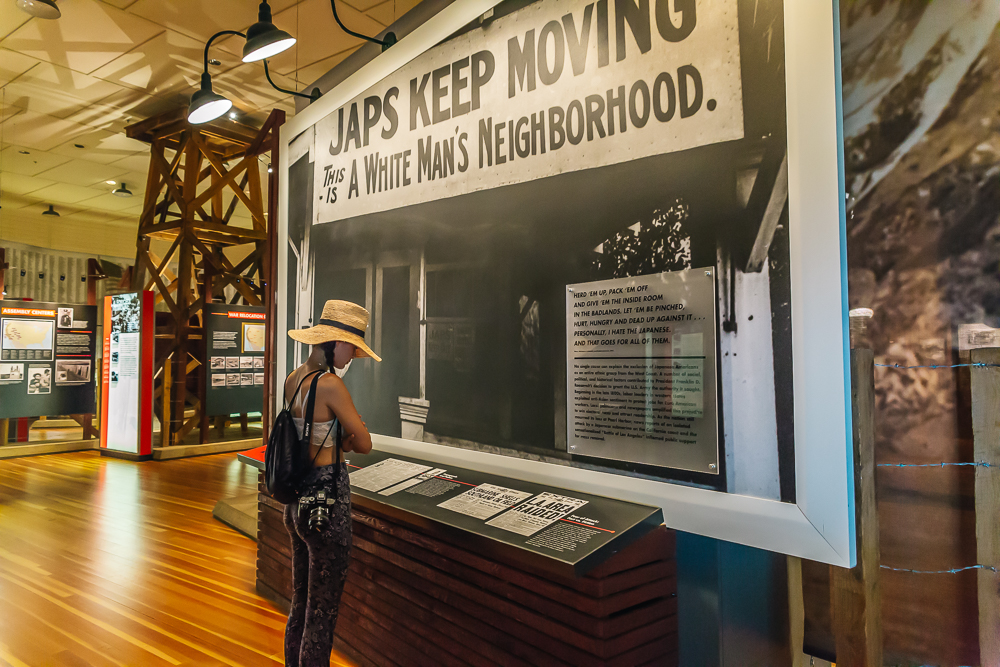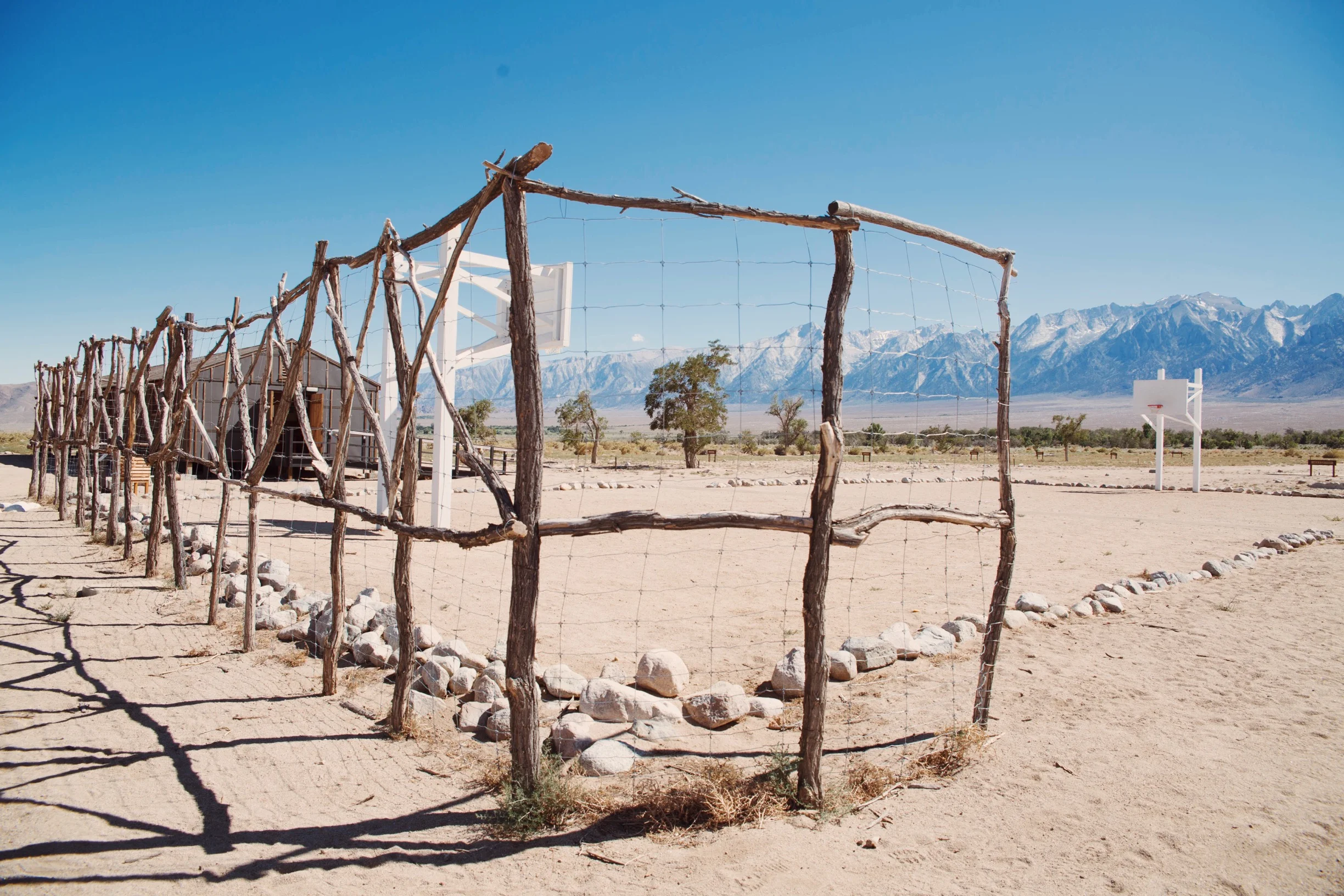Manzanar National Historic Site: WWII Japanese-American War Relocation Center
/This post contains affiliate links, which means that at no additional cost to you if you click on one of the product links, we may earn a commission.
We wanted to visit Manzanar National Historic Site because it really hits home for us. It's not a site in the United States that is very well known and we actually found out about it recently through a friend. We knew the history behind Manzanar, but didn't know that the campsite was preserved.
Entrance to the museum
This was one of the camps created back in 1942, during World War II, when the US government ordered 120,000 Japanese American citizens to leave their homes and detained them in remote, military-style camps. They called them War Relocation Centers and this happened because Japan bombed Pearl Harbor on December 7, 1941.
Inside the Manzanar museum
It's frightening to think that even if you were an American citizen, it didn't matter. If you had any Japanese ancestry, you were forced into this camp. It could have been us in these camps if we lived during that time. Our mother is Japanese, so automatically that would put us on the list to be transported to this camp.
The 500-acre housing section was surrounded by barbed wire
With the uncertainty of not knowing what was going to happen, many sold (if they were able to) their land, house, or anything that they owned. They could only bring what they could carry and some only filled their suitcases with diapers if they had small children. There were also restrictions on what you couldn't bring. For example, you weren't allowed to bring cameras. There is a story of one Japanese American, Toyo Miyatake, who smuggled one in.
Signs like this were posted around cities during WWII
The first Japanese to arrive at camp was in March 1942. By September, ten thousand Japanese Americans were forced to live in small shared barracks at Manzanar.
"Standing in line in front of the latrine, standing in line of our bath. That was a shock...we got sick...we couldn't go...we didn't want to go. It was smelly and it was dirty...there were no partitions, and it was so cramped that we almost touched each other. It was very humiliating." - Mary Tsukamoto
Reading a story about Hikoji Takeuchi, who was shot while picking up scrap lumber to make a chair for his mother.
Manzanar National Historic Site was a lot bigger than we expected. You start your tour indoors, where there is a museum and a theater. Then you can walk or drive around the camp site outdoors and view the different barracks and structures of the camp.
The landscape is beautiful at Manzanar. However, the hot summers, cold winters and dust storms made living conditions very harsh.
We spent a good hour or two exploring and reading everything in the museum. As we toured the space, we came to realize that the situation was worse than we had originally thought. One small example was the "beds" they had to sleep on. On top of being crammed into a tiny space with up to 8 people and no privacy, everyone had to stuff their mattresses with hay and sleep on narrow beds. There was an example of the mattress on display and when we felt it, we were shocked at how uncomfortable it was. We couldn't believe the internees had to live like this for over 3 years.
Manzanar Mess Hall
We got really emotional when we came upon the children's exhibit room. There were self portraits of the children crying and drawings of segregation. We learned that since all the internees had to leave most of their belongings behind, there weren't enough toys for the children. So, the parents started the Toy Loan Center. It was like a library of toys.
Despite the harsh living conditions, most of the internees tried to make the best of their situation by building clubs, gardens, a basketball court, baseball field, newspaper press and more.
Mess Hall Kitchen Building
After the war ended, all Japanese-Americans were released from the camps and the last one closed in November 1945. They were all given $25 and had to find transportation to their next destination on their own. While many left the camp voluntarily, a significant number refused to leave because they had no place to go after having lost everything and being imprisoned in the camp for over 3 years. The Japanese-American community suffered significant economic losses and psychological trauma from the incarceration.
Inside the Mess Hall
146 incarcerees died at Manzanar. Fifteen incarcerees were buried there, but only five graves remain, as most were later reburied elsewhere by their families. On our driving tour, we stopped by the Manzanar cemetery site marked by a monument that was built by incarceree stonemason, Ryozo Kado, in 1943. An inscription in Japanese on the front of the monument reads, 慰靈塔 (Soul Consoling Tower). The monument was draped in string of origami paper cranes and behind it are numerous tombstones. It was a powerful site to see.
During the 1970s, Japanese Americans launched a campaign to call for redress from the U.S. government. In 1988, Congress apologized for it’s “race prejudice and war hysteria” and passed the Civil Liberties Act of 1988. This granted former incarcerees $20,000 in reparations.
Manzanar cemetery
Several films have been made about the camp. One of the recent ones being Day of Independence (2003). I had the pleasure of speaking with the director of photography, Stacy Toyama, about this film. A lot of the extras that they used on set were the actual internees and their children. He said that it was hard for many of them to relive this time in their lives, but felt that it was important to teach their children the history of what had happened to them.
We’re so glad the Japanese-Americans fought to preserve this site and so glad we stopped by. This is something that should never be forgotten and a reminder to the nation to never let a tragedy like this happen again. You can learn more about Manzanar and for more photos visit their Instagram.








































